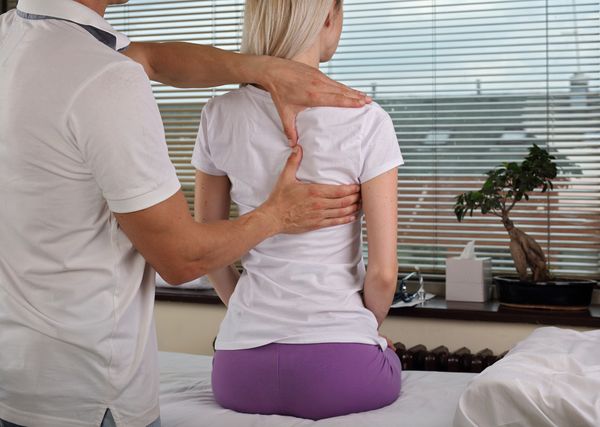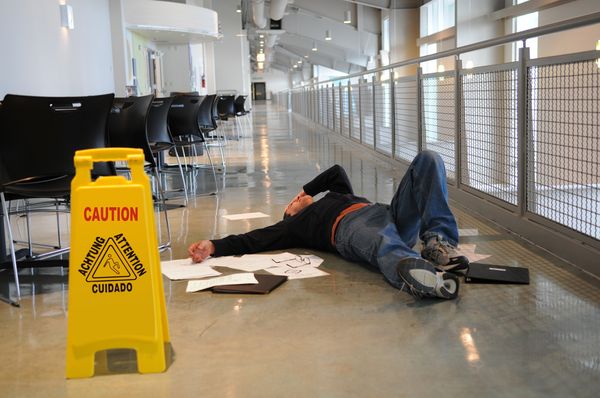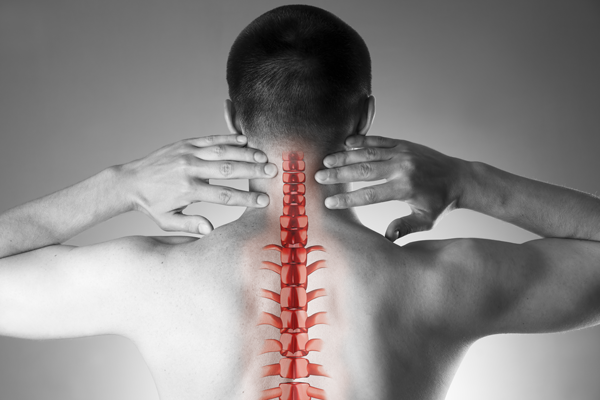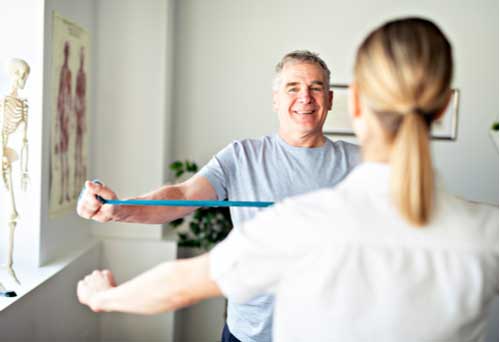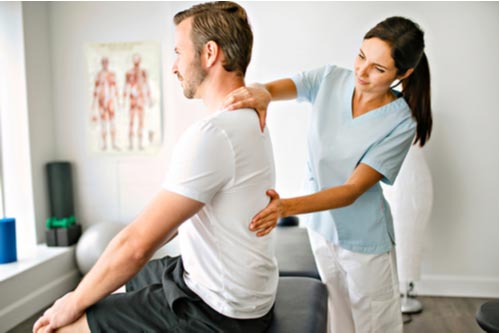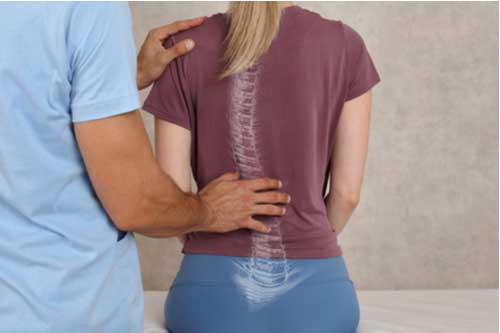- August 2, 2022
- Bursitis
Bursitis is a condition that involves inflammation of the bursa, which is a small sac of fluid that acts as a buffer between bones, tendons, and muscles. When this sac becomes inflamed, it can cause pain and swelling in the area where it is located. This condition is often seen in the shoulder and elbow joints, but it can affect the hips or knees.
Bursitis can cause permanent damage if left untreated. So, if you have pain, swelling, or redness around a joint, you will need treatment immediately. Specific Care Chiropractic is dedicated to delivering the highest level of care possible, which means you can expect personalized attention as well as expert Sunrise bursitis treatment. Our team will design a physical therapy program to help strengthen your muscles.
Causes of Bursitis
Bursitis usually occurs when a tendon rubs against a bone or joint at a certain angle and causes inflammation of the bursa (a small sac of fluid that reduces friction between tissues). Joints affected by bursitis include:
- Elbow (lateral and medial epicondylitis)
- Knee (patellar tendinopathy)
- Shoulder (rotator cuff tendonitis)
The exact cause of bursitis is unknown. However, several factors have been linked to this condition, including:
- Injury to the joint (either from an accident or repetitive motion)
- Age and gender
- Obesity
- Dislocation or subluxation of the joint
- Excessive weight-bearing activities such as running and jumping
- Inflammatory diseases like rheumatoid arthritis, gout, or lupus
Who Gets Bursitis?
People of all ages can get bursitis, but it’s more common in older adults because as you get older, your body starts to wear down naturally. Older people are more likely to have conditions such as osteoarthritis or rheumatoid arthritis that increase their risk of developing bursitis.
Other factors that increase your risk of developing bursitis include:
- Repetitive tasks: Jobs or hobbies that involve repetitive tasks (such as sports, manual labor, or music) may put you at risk for developing bursitis.
- Conditions such as diabetes or gout: People with diabetes are at increased risk of developing bursitis in their feet, hands, and elbows because they have an increased level of uric acid in their body. Gout is another condition that can lead to bursitis because it causes crystals to accumulate in your joints – these crystals irritate the surrounding tissue and cause inflammation.
- Family history of arthritis or joint problems: If your parents or siblings have arthritis or other joint problems, you will likely suffer from bursitis.
How Is Bursitis Diagnosed?
Diagnosing bursitis typically starts with a physical exam, including an evaluation of your range of motion, muscle strength, and reflexes. Your doctor will also do an x-ray to rule out other conditions that could be causing pain in the same area.
An ultrasound uses sound waves to create images of body structures inside the body while an MRI scan uses a strong magnetic field and radio waves to create detailed images of organs and structures within the body. These tests can show whether fluid buildup within the bursa is causing pain – but don’t show what’s causing it (bacterial infection or autoimmune disease).
A blood test can rule out bacterial infection within your joint as well as other conditions such as rheumatoid arthritis. If you have bursitis, you may need additional tests to determine the cause, such as a sample of fluid from the bursa, which can be analyzed for signs of infection.
Sunrise Bursitis Treatment Options
If you have bursitis, there are many treatments available to help alleviate your symptoms. Once the doctor has determined the cause of your bursitis, he or she can help you choose a treatment option that best fits your needs.
Chiropractic Adjustments
Chiropractic adjustments can ease the pain associated with bursitis. A chiropractor will manipulate the spine and joints of your body to put them back into proper alignment and reduce inflammation in the joint space. This helps relieve pain and restore function to your joints. You may need several treatments before noticing improvement.
Some techniques include manual extremities, activators that yield high-velocity, low-amplitude (HVLA) thrust, and sacral-occipital technique among others.

Physiotherapy
A physiotherapist will teach you exercises that help improve range of motion while strengthening muscles around the affected joint to prevent future injury and pain from occurring again. They can also teach you how to prevent future flare-ups by improving your posture, strengthening your muscles, and stretching them out properly.
A physiotherapist can help manage other injuries contributing to your symptoms, such as arthritis in other areas of your body. Some physiotherapy techniques include massage therapy, stretching and strengthening, corrective care, and rehabilitative therapy among others.
Prevention of Bursitis
The following steps can reduce your risk of developing bursitis:
- Use kneeling pads when kneeling on hard surfaces.
- Lift properly by bending at the knees so as not to put extra stress on the hips.
- Take frequent breaks when performing repetitive motions such as lifting weights or painting.
- Maintain a healthy weight; people who are overweight are more likely to develop bursitis than people who are at a healthy weight.
- Warm up before strenuous activities (for example, jogging) and cool down afterward by walking slowly for several minutes before stopping completely to rest.
- Make changes to your daily activities to help reduce your symptoms and prevent future flare-ups.
When to See a Doctor
Bursitis symptoms will usually improve with some rest. However, you should see your doctor if you:
- Have pain with movement or activity that lasts more than two weeks;
- Have symptoms that get worse with activity;
- Have symptoms that get worse after the activity has stopped;
- Experience disabling joint pain that is so severe that it interferes with your ability to work and pursue other normal activities;
Have redness, warmth, or swelling in the injured area; - Have sudden difficulty moving one or more joints, consult your doctor immediately because this may be due to an injury or serious problem;
- Experience excessive swelling, redness, bruising or a rash in the affected area – this may indicate infection or another serious condition;
- Get fever and chills, as this is a sign of an infection that requires prompt medical evaluation; or
- Have bursitis recur.
Get Exceptional Bursitis Treatment in Sunrise, FL!
If you struggle with bursitis, sunrise bursitis treatment can help alleviate your pain. Our doctors at Specific Chiropractic Care are committed to providing you with the care and attention you deserve.
We provide various treatment options, whether physical therapy or chiropractic care. Our goal is to improve your quality of life by relieving your pain and allowing you to return to normal activities. Contact us today for a consultation with a Sunrise bursitis specialist.
